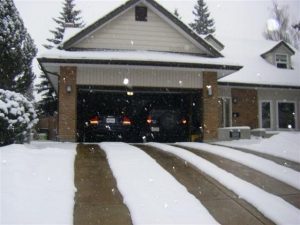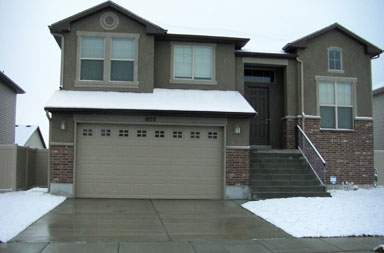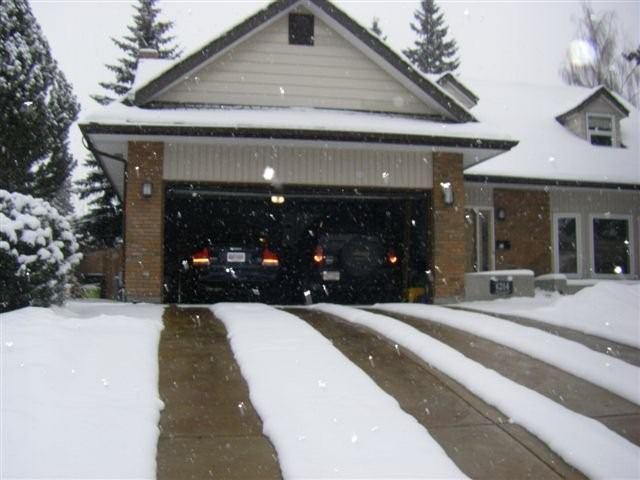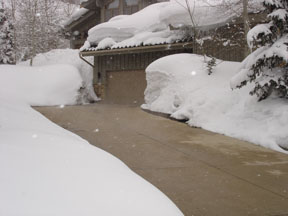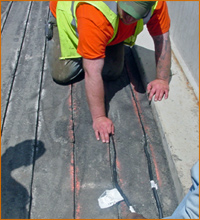Whether you’ve been living comfortably in your house for years or you are building a new home, installing a radiant heated driveway is a viable option for you. Certainly it is more practical to install a radiant snow melting system during the initial construction phase of a driveway, but unknown to some homeowners is that both asphalt and concrete driveways can be retrofitted with electric radiant heat systems.
Hydronic Snow Melting Systems
There are two types of driveway heating systems available today: hydronic systems and electric systems. Hydronic snow melting systems utilize a mixture of water and propylene glycol (anti-freeze) that circulates through a closed-loop network of flexible polymer (Pex) tubing that is installed in the concrete or asphalt. The liquid is heated by a water heater/boiler and then circulated through the Pex tubing by a pump to heat the driveway and melt snow. The condensing boiler (water heater) can be powered by any energy source, including natural gas, electricity, oil, wood, or even solar collectors. Because of this, hydronic snowmelt systems can offer a slightly lower operating cost than electric systems, especially for large snow melting applications.
Warmzone hydronic systems feature highly efficient condensing boilers with an Energy Star Rating as well as industry leading pumps, valves and tubing. Unfortunately, when it comes to retrofitting a driveway with hydronic radiant heat, the only way to accomplish this is to tear out the old driveway and install a new one.
Electric Heated Driveways
Electric radiant snow melting systems are easier and cheaper to install than their hydronic counterpart. Both existing concrete and asphalt driveways can be retrofitted with electric radiant heat.

Electric snow melting systems utilize specially engineered ClearZone heat cable that is available on spools or pre-spaced in mats that can be easily rolled out during installation in concrete, asphalt or under brick and stone paver driveways and sidewalks. The ClearZone cable is UL listed and consists of a twin conductor with FEP/XLPE insulation and polyolefin jacketing that provides flexibility and excellent UV protection. The heat cable is rated at 220°F and has a minimum 10-year warranty. Designed to produce 30-50 watts per square foot, ClearZone radiant heat cable has the quickest response time (time to heat the driveway upon system startup) of any snow melting system on the market. Because electric snowmelt systems do not rely on heating water heater before pumping the liquid through PEX tubing, the response time is considerably less than that of hydronic systems.
Fully Automated Snow Melting Systems
The fully automated driveway heating system features heat cable, a control unit (controller), and a high-performance snow sensor (activation device). One of two types of sensors (aerial or pavement mount) can be installed, depending on the project. Aerial mount sensors are typically used for residential heated driveways while pavement mount snow sensors are more commonly used in large commercial snow melting applications.
When the snow sensor detects precipitation and temperatures are below a designated set point (usually set at 39 F), the sensor signals the master control unit, initiating startup of the snow melting system. While the driveway snow melting system is fully automated, it can also be activated manually. The controller includes a manual override function for times when snowdrifts or ice forms because of wind or shaded areas. Another especially attractive feature of electric heated driveways is that the systems do not feature any moving parts, so they are virtually maintenance free and extremely reliable.
Read Heated Driveways and Snow Melting Systems Part II

